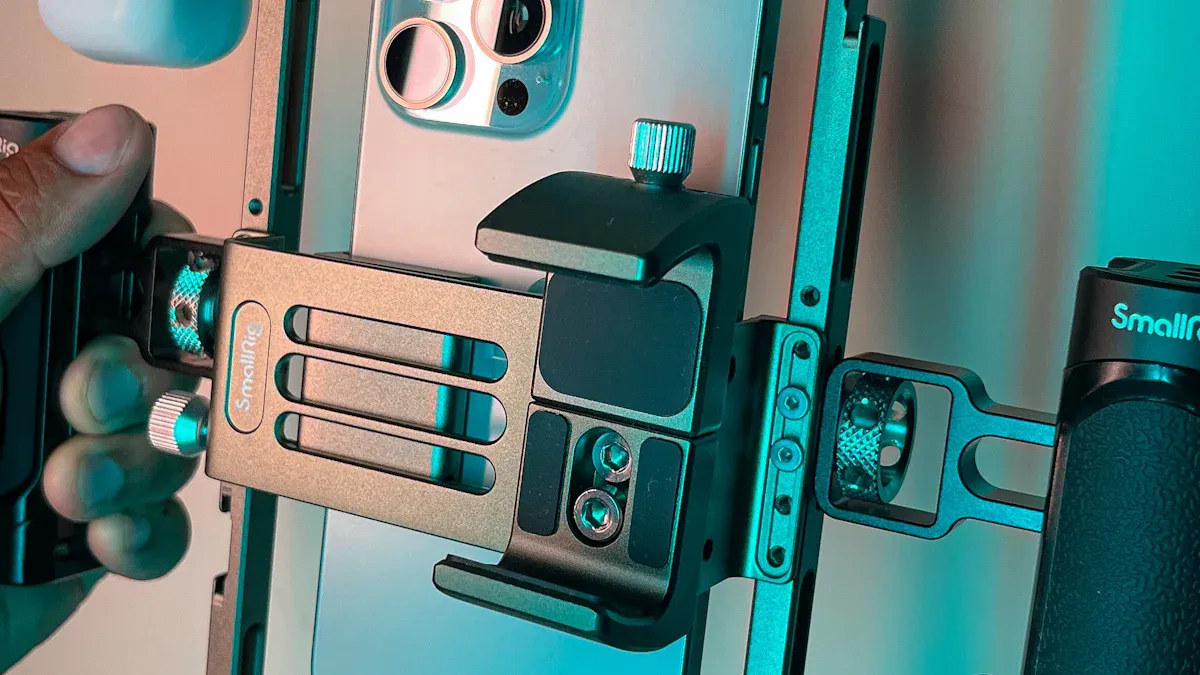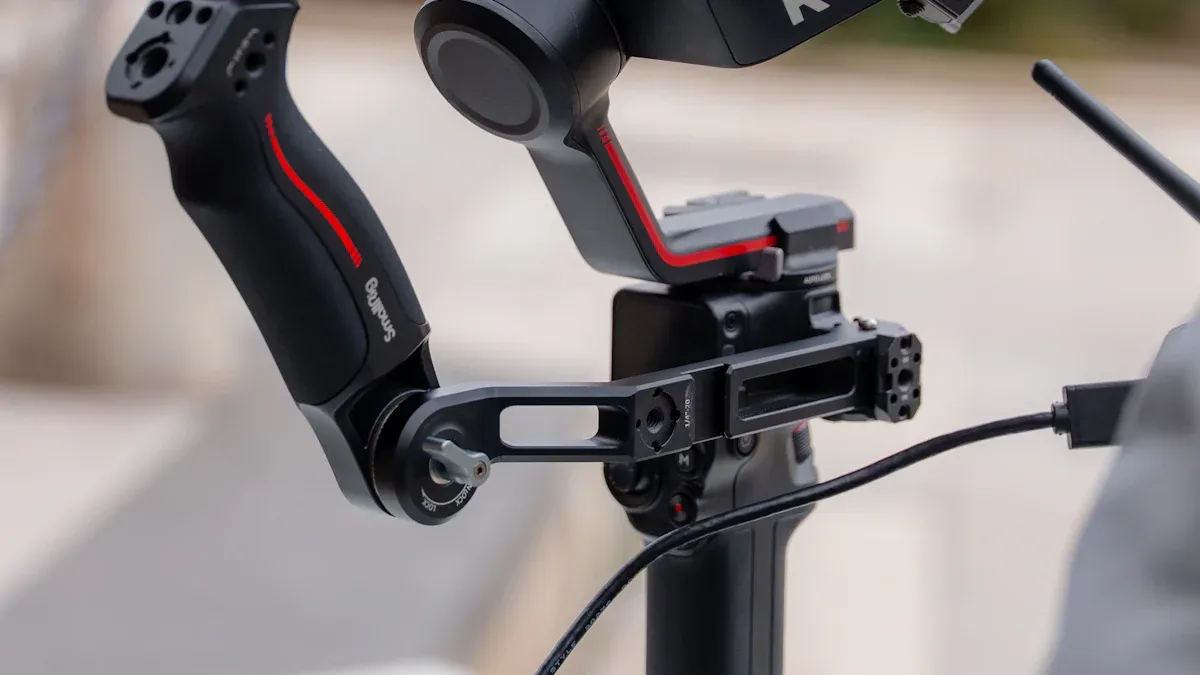Understanding How UAV Gimbal Cameras Stabilize Your Footage

Have you ever wondered how UAV gimbal cameras keep your shots so smooth? These devices use advanced technology to provide image stabilization, ensuring you capture stable footage even in windy conditions or during rapid movements. Stabilization is crucial in aerial photography because it enhances the quality of your images and videos. With a gimbal, you can focus on your creativity without worrying about shaky shots.
Key Takeaways
UAV gimbal cameras help keep videos steady. They fight against drone movements for smooth, clear videos.
You should calibrate your gimbal often. Do this before each flight to avoid shaky videos.
Gimbals greatly improve video quality. They help you take great pictures even in tough conditions like wind or low light.
Buying a gimbal can improve your aerial photography. It is a useful tool for both hobbyists and professionals.
Take care of your gimbal with regular cleaning, oiling, and software updates. This helps it work well for a long time.
What is a UAV Gimbal Camera?

A UAV gimbal camera is a specialized device that stabilizes your drone camera, allowing you to capture smooth and professional-looking footage. It works by counteracting any unwanted movements caused by wind or drone vibrations. This stabilization is essential for achieving high-quality aerial photography and videography.
Key Components of a UAV Gimbal Camera
Understanding the key components of a UAV gimbal camera helps you appreciate how it functions. Here’s a breakdown of the main parts:
Motors
Most drone gimbals use brushless motors. These motors are designed specifically for the cameras or sensors they support. They provide precise control over the camera's position, ensuring stability even during rapid movements.
IMUs (Inertial Measurement Units)
IMUs play a crucial role in stabilizing the camera. They consist of gyroscopic sensors that detect motion and measure the rate of rotation around three axes. When the IMU senses unwanted movement, it signals the gimbal’s motors to counteract it. This process keeps your camera steady, allowing you to focus on capturing stunning visuals.
Frame and Mounting
The frame and mounting system of a gimbal on a drone are equally important. They provide the structure that holds everything together while minimizing vibrations. Many gimbals incorporate anti-vibration systems made from materials like carbon fiber and rubber. These materials absorb shocks and further enhance stability.
Here’s a quick overview of the common components found in UAV gimbal cameras:
Component | Description |
|---|---|
Brushless Motors | Most drone gimbals are powered by brushless motors, which are designed for specific cameras or sensors. |
Inertial Measurement Unit (IMU) | Helps stabilize the camera at specific angles using programmed algorithms for total stabilization. |
Gimbal Control Unit (GCU) | Connects with the Flight Control System to manage the gimbal and outputs video information for transmission. |
Anti-Vibration Systems | Damping systems made with materials like carbon fiber and rubber to absorb vibrations. |
With these components working together, you can achieve remarkable stability in your aerial footage.
How Does It Work: Mechanics of Stabilization

When you think about how drone gimbals work, two main stabilization methods come to mind: gyroscopic stabilization and electronic stabilization. Each method has its strengths and weaknesses, making them suitable for different scenarios.
How Drone Gimbals Work
Gyroscopic Stabilization
Gyroscopic stabilization relies on the principles of physics. A gyroscope maintains its orientation regardless of the motion around it. In a drone gimbal, this means that as the drone moves, the gyroscope detects changes in position and adjusts the camera's angle to keep it steady. This method is particularly effective for capturing smooth footage during fast maneuvers or in windy conditions.
Electronic Stabilization
On the other hand, electronic stabilization uses software to enhance image quality. This method processes the captured images digitally, compensating for any unwanted movements. While it can be effective, it often results in lower resolution and may not handle rapid movements as well as gyroscopic stabilization. For instance, Optical Image Stabilization (OIS) physically moves components to counteract hand movements, providing real-time compensation and clearer images.
Role of Sensors and Feedback
Sensors play a vital role in enhancing the performance of UAV gimbal cameras. They provide real-time insights into the drone's movements and help maintain stability. Here are some key benefits of using sensors:
Advanced imaging capabilities, like high-definition thermal IR FLIR imaging, allow for detailed analysis in low visibility.
Gyro-stabilization technology ensures steady imaging despite drone movements.
Object detection and precise geo-referencing features enable accurate tracking and mapping in surveillance contexts.
These sensors continuously feed data to the gimbal's control unit, allowing for real-time adjustments. The system processes this data to interpret the drone's movements and make necessary corrections. This feedback loop ensures that you capture high-quality footage, no matter the conditions.
Benefits of Using Gimbals in Aerial Photography
Enhanced Video Quality
When you use a drone gimbal, you instantly notice the difference in video quality. Gimbals stabilize your camera, allowing you to capture smooth, professional-looking footage. This stability is crucial, especially when you're flying in windy conditions or making quick maneuvers. With a UAV gimbal camera, you can achieve that ideal aerial shot without the jitters. The result? Crisp, clear videos that impress your audience.
Versatility in Shooting Conditions
One of the best things about drone gimbals is their versatility. Whether you're shooting in bright sunlight or low-light conditions, gimbals adapt to your environment. They work well with advanced thermal imaging, making them perfect for thermal imaging drone surveillance. You can capture stunning visuals even in challenging situations. Plus, they allow you to experiment with different angles and movements, giving you creative freedom.
Professional Applications
Gimbals aren't just for hobbyists; they play a significant role in professional applications too. Filmmakers and photographers rely on drone gimbals to deliver high-quality content. Whether you're targeting and tracking subjects for a documentary or capturing breathtaking landscapes, gimbals enhance your work. They help you maintain stable footage, which is essential for creating polished, engaging videos. In industries like real estate and event coverage, using a drone gimbal can set your work apart from the competition.
With all these benefits, it's clear that investing in a drone gimbal can elevate your aerial photography game.
Common Issues with Gimbal Cameras
Even the best gimbal cameras can run into some common issues. Knowing what to look out for can help you troubleshoot and maintain your equipment effectively.
Calibration Problems
Calibration is crucial for your gimbal to function correctly. If you notice shaky footage or erratic movements, it might be time to recalibrate your gimbal. Many gimbals come with built-in calibration tools, but you may need to follow specific steps to ensure accuracy. Always check your user manual for guidance on how to calibrate your device properly. Regular calibration helps maintain stability and ensures you capture smooth footage.
Battery Life Concerns
Battery life is another critical factor to consider. Heavier gimbal cameras demand more power for stabilization and lifting, which escalates energy consumption. This increased energy use directly correlates with reduced battery life, resulting in shorter flight durations and necessitating more frequent battery replacements. To maximize battery life, consider using lighter cameras or optimizing your gimbal settings. Always carry extra batteries for longer shoots, so you don’t miss those perfect moments.
Mechanical Failures
Mechanical failures can happen, even with high-quality gimbals. Common issues include motor malfunctions or loose components. If you hear unusual noises or notice that your gimbal isn’t responding as it should, it’s essential to address these problems quickly. Regular maintenance, such as checking for loose screws and ensuring that motors are functioning correctly, can help prevent these issues. If you encounter persistent problems, don’t hesitate to reach out to the manufacturer for support.
By being aware of these common issues, you can keep your gimbal camera in top shape and continue capturing stunning aerial footage.
Maintenance Tips for Gimbal Cameras
Taking care of your gimbal camera is essential for keeping it in top shape. Regular maintenance can help you avoid issues and ensure smooth operation. Here are some key tips to keep your gimbal running smoothly.
Regular Calibration
Calibration is crucial for your gimbal's performance. You should calibrate your gimbal before each flight, especially if you notice any instability in your footage. Most gimbals come with built-in calibration tools. Just follow the instructions in your user manual to get it right. Regular calibration helps maintain stability and ensures you capture smooth footage every time.
Cleaning and Care
Keeping your gimbal clean is vital for its longevity. Here are some cleaning tips to follow:
Regularly clean and lubricate gimbal bearings. This helps reduce friction and keeps everything moving smoothly.
Use contact cleaner or an alcohol bath to clean the gimbal. After that, add a few drops of high-speed oil to lubricate the bearings.
Frequency of cleaning depends on your usage conditions. If you often fly in dusty or dirty environments, you may need to clean your gimbal more frequently.
By following these steps, you can prevent dirt and grime from affecting your gimbal's performance.
Software Updates
Don’t forget about software updates! Manufacturers often release updates to improve performance and fix bugs. Check for updates regularly and install them as needed. Keeping your gimbal's software up to date ensures you benefit from the latest features and enhancements.
In summary, UAV gimbal cameras play a vital role in stabilizing your footage. They reduce camera shake, improve image quality, and allow you to capture creative angles and shots. This technology is essential for achieving high-quality aerial photography. Whether you're a hobbyist or a professional, investing in a gimbal can elevate your work. So, why not consider adding a UAV gimbal camera to your gear? You’ll be amazed at the difference it makes!
FAQ
What is the main purpose of a UAV gimbal camera?
A UAV gimbal camera stabilizes your footage by counteracting drone movements. It ensures smooth, professional-looking videos, even in challenging conditions like wind or rapid maneuvers.
How often should I calibrate my gimbal?
You should calibrate your gimbal before each flight, especially if you notice any instability. Regular calibration helps maintain optimal performance and ensures smooth footage.
Can I use a gimbal with any camera?
Most gimbals are designed for specific camera models. Always check compatibility before purchasing to ensure your camera fits securely and operates effectively with the gimbal.
What should I do if my gimbal isn’t stabilizing properly?
If your gimbal isn’t stabilizing, try recalibrating it first. If issues persist, check for loose components or mechanical failures. Consult the user manual or contact the manufacturer for support.
Are gimbals worth the investment for hobbyists?
Absolutely! Gimbals enhance video quality and provide creative shooting options. They help hobbyists capture stunning aerial footage, making them a valuable addition to your gear.